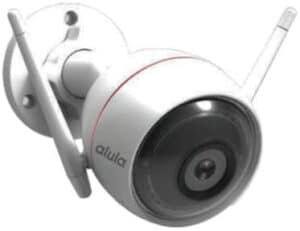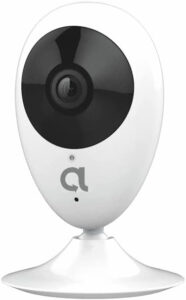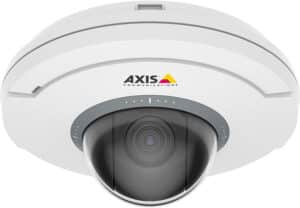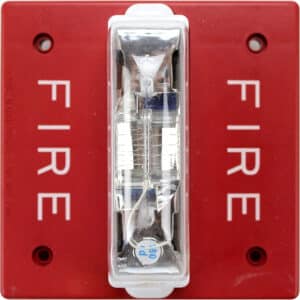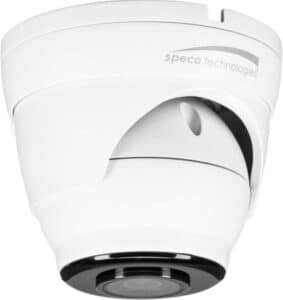The Future of Security Cameras: Leveraging Machine Learning for CCTV Video Surveillance
As crime rates continue to rise and technology advances, the need for innovative security solutions has never been higher. Leveraging machine learning for CCTV video surveillance is the future of security cameras, offering an unprecedented level of accuracy and reliability.
By utilizing the power of machine learning, security cameras can now recognize suspicious behavior and alert the appropriate authorities in real-time, providing an unparalleled level of protection for businesses, homes, and public venues.
This article will explore the potential of machine learning in CCTV video surveillance systems, explaining how it can be used to create a safer and more secure future. Get ready to explore the cutting-edge possibilities of the future of security cameras.
Table of Contents
Introduction to Machine Learning for A CCTV Video Surveillance System
The future of security cameras is here and it’s leveraging the power of machine learning. Machine learning is the process of teaching a computer to recognize patterns in data and make decisions based on those patterns. This technology is being increasingly used in video surveillance systems to help security professionals better monitor and protect their environments.
In the past, CCTV video surveillance systems relied on basic motion detection alarms to alert security personnel of any suspicious activity. However, with the advancement of AI-enabled machine learning, video surveillance systems are becoming increasingly sophisticated, allowing security professionals to more accurately detect specific objects and individuals in video footage.
Leveraging Deep Learning Technology for Video Surveillance
Deep learning technology uses neural networks to process large amounts of data and learn from it over time. This enables machines to become better and more accurate at identifying objects and individuals in video footage. Here are some key points to consider when discussing how deep learning technology is being used for video surveillance:
-
- Object Detection: Deep learning algorithms can detect specific objects in video, such as weapons or unusual packages, and raise an alert for security personnel to investigate.
- Facial Recognition: By analyzing facial features, deep learning algorithms can recognize individuals even when they are partially obscured or in different lighting conditions. This can be used to identify known criminals or persons of interest.
- Suspicious Behavior Detection: The technology can analyze video footage for unusual behavior, like running, loitering, or abandoning objects, and alert security personnel before a situation escalates.
- Predictive Analytics: Deep learning technology can also be used to predict potential threats by analyzing patterns and trends in video footage. For example, it can detect a large gathering of people or vehicles in a specific area and alert security personnel to be on high alert.
The integration of deep learning technology in video surveillance systems has raised concerns about privacy and the risk of misidentification. However, when used responsibly and in compliance with privacy laws, deep learning technology has the potential to improve public safety and prevent criminal activity.
Integrating Artificial Intelligence into Video Surveillance Systems
AI-enabled video surveillance systems have become increasingly popular in recent years due to their ability to improve security and reduce the need for human monitoring.
These systems can identify and track individuals by analyzing facial recognition data, detecting license plates on vehicles, and using motion sensors to detect suspicious activity.
In addition to improving security, AI-enabled systems can also be used to monitor and manage crowd control at large events, detect accidents on highways, and provide early warning systems for natural disasters.
One example of an AI-enabled video surveillance system is the SmartCCTV system developed by British company Vivacity Labs. This system uses AI algorithms to analyze video footage and detect traffic congestion, accidents, and other incidents in real-time.
The use of AI in video surveillance has also raised concerns about privacy and civil liberties. Critics argue that facial recognition technology can be inaccurate and potentially misuse data and that the expanded use of video surveillance could further erode privacy rights.
Improving Security with Video Analytics and Pattern Recognition
Video analytics uses mathematical algorithms and computer vision techniques to analyze video footage in real-time, enabling security personnel to respond quickly to potential threats.
Pattern recognition is a powerful tool for detecting unusual behavior or activity. It can detect patterns of movement, such as a person moving back and forth in a particular area, which may indicate the potential for criminal activity.
Through machine learning algorithms, video surveillance systems can learn to recognize specific patterns that may not be immediately recognizable to human operators, such as identifying a specific vehicle that has been seen in a particular location at a particular time.
Artificial intelligence (AI) can also be used to enhance video surveillance systems. AI-powered cameras can automatically track and follow a person or object as it moves through a scene, making it easier for security personnel to identify potential threats.
With the increasing availability of high-quality cameras and low-cost computing power, video surveillance systems are becoming more affordable and accessible. This is making it easier for organizations of all sizes to deploy video analytics and pattern recognition tools to improve their security posture.
However, as with any technology, there are also concerns about the use of AI in video surveillance systems. For example, there are concerns about privacy and potential misuse of the data collected by these systems, as well as biases in the data or algorithms used.
Organizations that are considering using AI in their video surveillance systems need to carefully consider the potential benefits and risks and work to mitigate any potential negative impacts. They will also need to ensure that any AI-powered systems are properly tested and reviewed to ensure they are working as intended and do not pose any risks to the organization or its stakeholders.
The Video Surveillance Industry and Object Identification
Video surveillance is commonly used in various industries, including retail, transportation, and government agencies.
Object identification technology has advanced in recent years, with the ability to identify small details such as facial features, license plate numbers, and even specific items.
The use of object identification in video surveillance systems can help reduce crime rates and improve public safety.
Some video surveillance systems can be integrated with other technologies such as facial recognition software or license plate readers to enhance security capabilities.
However, the use of object identification technology raises concerns about privacy and the potential for misuse by law enforcement or other entities.
Regulations and guidelines are in place to ensure that object identification technology is used ethically and lawfully.
The effectiveness of object identification technology in video surveillance systems depends on factors such as lighting conditions, camera quality, and the ability of the software to recognize objects accurately.
As technology continues to advance, it is likely that object identification in video surveillance systems will become even more sophisticated and accurate.
What are some potential solutions to address privacy concerns related to the use of object identification technology in video surveillance? How can we ensure that it is used ethically and lawfully?
Increasing Efficiency with Video Cameras and Saves Storage Space
Video cameras are an important component of most modern video surveillance systems. They are typically used to capture high-quality video footage of an area or location, which can then be analyzed and interpreted by software algorithms.
One of the key benefits of using video cameras is that they are able to capture footage 24/7, allowing security personnel to monitor a location even when they are not physically present. This can help to identify potential security threats or issues before they escalate.
In addition to capturing video footage, video cameras can also be equipped with other features such as motion detection, facial recognition technology, and license plate recognition software. These features can improve the accuracy and efficiency of a video surveillance system, reducing the need for manual reviews of footage.
Video analytics software can be used to analyze video footage captured by cameras and automatically detect patterns or anomalies. This can help to identify potential security threats or issues, such as intruders or suspicious activity, alerting security personnel in real time.
Another benefit of using video cameras in video surveillance systems is that they can help to save storage space. By capturing only relevant video footage, the amount of data that must be stored can be reduced, which can lead to significant cost savings over time.
Intelligent Alerts and Face Recognition for Seamless Integration
Intelligent alerts are becoming increasingly popular in video surveillance systems due to the ability to provide real-time notifications of potential security threats.
This technology utilizes advanced algorithms and AI-enabled machine learning to analyze video footage and detect suspicious behavior, such as loitering or trespassing.
In addition to detecting suspicious behavior, intelligent alerts can also be used to track individuals and recognize faces, enabling security personnel to identify potential threats and take immediate action.
The integration of intelligent alerts into video surveillance systems can greatly improve security measures, allowing security personnel to quickly respond to potential threats and prevent crimes before they occur.
One question that may arise is the effectiveness of intelligent alerts in reducing crime rates. Studies have shown that the use of intelligent alerts in video surveillance systems can significantly decrease the number of property crimes and improve overall public safety.
Conclusion
We’ve learned that the future of security cameras is leveraging Machine Learning for CCTV video surveillance. This technology will make CCTV video surveillance more efficient and effective in helping to prevent crime and protect property. With this technology, security cameras can now recognize, analyze and respond to a variety of situations.
Now is the time to upgrade your security system with Xcessory Zone’s e-commerce DIY home security products. Our products are designed to help you stay one step ahead of the criminals and ensure that your home and property remain safe and secure. With our intelligent and adaptable technologies, you can be sure that your security system is up-to-date and ready to protect your home.
Don’t wait until it’s too late. Upgrade your security system with Xcessory Zone’s e-commerce DIY home security products today! Make sure your home and property are protected and your family is safe with the latest technology in security cameras and video surveillance.
FAQs
What are AI features in CCTV cameras?
When it comes to CCTV cameras and AI features, many people think of advanced surveillance cameras that can detect suspicious activity. But AI features in CCTV cameras can do much more than that. For example, AI can reduce false alarms by recognizing the difference between humans and animals. AI-powered CCTV cameras can also recognize faces and license plates, allowing for more thorough security and better protection of premises.
How can machine learning be used for CCTV video surveillance?
Machine learning can be a powerful tool for CCTV video surveillance. Through object recognition and other algorithms, machine learning can be used to analyze surveillance video for anomalies or suspicious activity. For example, the technology can be used to detect intruders, recognize suspicious behavior or identify objects of interest.
In addition, machine learning can be used to automate the process of searching through footage and detecting objects of interest faster than manual methods. Machine learning can also be used to create a comprehensive security system that can identify potential threats and alert authorities in real-time.
What types of security cameras are best suited for machine learning technology?
There are a few types of security cameras that are best suited for machine learning technology. The first is a network camera, which is an IP-based camera that can be connected to a network. These cameras are ideal because they can transmit data over long distances and have high-resolution images. Additionally, they come with built-in analytics that allows you to set up rules and triggers for events like motion detection.
The second type of camera is a thermal imaging camera. Thermal imaging cameras use infrared light to detect heat, making them great for identifying objects even in low light conditions or in complete darkness. They also have the ability to distinguish between humans and animals, which makes them very useful for detecting intruders and other suspicious activity.
Finally, there are panoramic cameras that provide an all-encompassing view of an area. These cameras can capture wide angles of up to 360 degrees, giving you a comprehensive view of your property.
Meet Our Partners!




